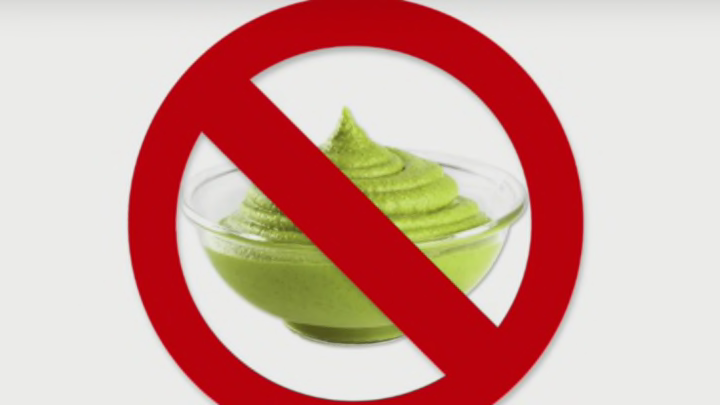You’ve probably never had wasabi. Don’t get us wrong: we’re not arguing that you’ve never eaten lime-green paste called “wasabi.” We’re saying that it’s not actually wasabi. Read on and check out the video below from the American Chemical Society for more.
True wasabi generally comes in one form: the thick green stem, or rhizome, of the Wasabia japonica plant. It’s found almost exclusively in high-end restaurants in Japan, and is prepared by grating the rhizome across a metal or sharkskin-wrapped plane called an oroshigane. Wasabi plants like lots of space and a constant stream of running water, which makes them very difficult to cultivate in a greenhouse. Consequently, fresh wasabi is pretty rare and, therefore, pretty pricey.
Similar to hot peppers, wasabi on its own is not actually hot. A burning sensation arises when proteins on nerve cells in your mouth react with chemical compounds called isothiocyanates in your wasabi (or your “wasabi,” more likely).
Also like hot peppers, wasabi is of very special interest to medical researchers, who believe that understanding its burn-producing powers could help them develop better treatments for pain and inflammation.
So what is that green blob next to your sashimi, if it’s not wasabi? A decent substitute, made of powdered horseradish, hot mustard, and food coloring. The fake stuff does a passable job of replicating real wasabi’s color, texture, and sinus-burning heat.
Real and fake wasabi aren’t chemically identical, and experts say it is possible to taste the difference—but only if you’ve ever had fresh wasabi. If you’re a foodie purist offended by sham condiments, you may want to see if you can try the real stuff. For the rest of us, green horseradish will do just fine.
Know of something you think we should cover? Email us at tips@mentalfloss.com.
